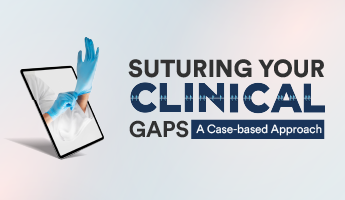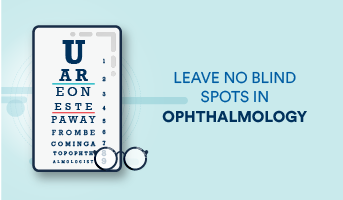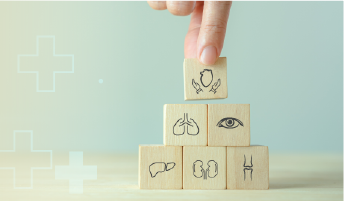High-yielding topics are a key element for an effective preparation strategy to score high in exams. A NEET PG aspirant must plan the preparation wisely focusing on high-yielding topics from every subject, time management, and most of all, health. Community medicine is a branch of medicine concerned with health promotion and disease prevention using professional management skills. A specialist in this field provides a holistic view of health and medical interventions with a primary focus on population health.
MBBS Prof Exam Pattern
According to the new CBME curriculum, the MBBS Prof exam for the Community Medicine subject has two theory papers, each of 100 marks, and the practical examination (Practical/Clinical + Viva) of 100 marks, i.e., a total of 300 marks paper. Questions in the theory examination include different types such as structured essays (long answer questions – LAQ), short answer questions (SAQ), and objective questions (MCQs and IBQs).
Important topics of PSM in MBBS
During MBBS, you should focus on early preparation not only for prof exams but also for competitive exams if you are aiming for postgraduation. Currently, there are two main exams in India, INI-CET and NEET PG/NExT. The weightage of Community Medicine is about 13-16 questions in INI-CET and 20-22 questions in NEET PG 2023.
Here’s a list of Important topics for PSM for NEET-PG, INI-CET, and MBBS Prof exams.
Concept of Health and Disease
- PQLI
- HDI
- Spectrum of Health
- Determinants of Health
- Indicators of Health
- Disability rates
- Healthcare Delivery Indicators
- Levels of Healthcare
- Epidemiological triad- The triangle
- Multifactorial causation
- The web of causation
- Natural History of Disease
- Risk factors
- Iceberg of disease
- Concept of Prevention
- Modes of Intervention
Environmental Health Problems
- Water (Complete)
- Air Pollution
- Disposal of wastes
- Septic tank
- Modern sewage treatment (Complete)
- Principles of arthropod control
- Mosquitoes- Anopheles vs Aedes
- Oxidation pool
- Fly control measures
- Classification of insecticides
- Overcrowding
- Indices of thermal comfort
Communication and health education
- Communication process
- Types and barriers of communication
- Functions of health communication
- Health Education- Define, Aims & Objectives
- Approach to health education
- Education vs Propaganda
- Principles of health education
- Practice of health education (Complete)
Nutrition
- Proteins (Complete)
- Iron (Complete)
- Iodine (Complete)
- Nutritional problems in public health- Undernutrition, Lathyrism
- Assessment of nutritional status
- Milk Hygiene
- Food toxicants
- Food additives
- Food fortification
- Food adulteration
- Community nutrition programmes
Basic statistics and its applications
- Presentation of statistical data (Complete)
- Measures of Central tendency
- Measures of dispersion
- Normal distribution & Curve – standard normal distribution
- Sampling methods
- Null & Alternate hypothesis
- Chi-square test
Epidemiology
- Name of Epidemiologist
- Mortality rates and ratio
- Descriptive Epidemiology (Complete)
- Case-control study (Complete)- Exposure rates, Advantages & Disadvantages, Examples, Matching, Odd’s ratio, Estimation risk
- Cohort Study (Complete)- Method, Relative risk, Attribute risk & Palpation attributable risk, Relative vs attributable risk, Examples
- Cohort vs case-control studies
- RCT- methods, types, Randomisation
- Association & Causation- types
- Dynamics of transmission
- Modes of transmission- Classification
- Incubation period, Generation time, Serial interval, communicable period
- Secondary attack rate
- Herd immunity
- National Immunisation Schedule
- Disinfection
- Investigation of an epidemic
- Screening of Disease-Complete criteria for screening
- Millennium Development Goals- MDG, SDG
Epidemiology of communicable and non-communicable diseases
Communicable diseases:
- Chickenpox
- Tuberculosis (Complete)
- Diphtheria- Immunisation
- Meningococcal meningitis
- Hepatitis B
- Diarrhoea
- Malaria
- Typhoid
- Investigation of food poisoning
- Tetanus- prevention
- Leprosy (Complete)
- AIDS (Complete)
Non-communicable diseases:
- Coronary heart disease and risk factors
- Oral Cancer
- Diabetes Mellitus
- Obesity
- Blindness- causes, and prevention
Demography and vital statistics
- Family Planning
- Contraception- Classification, barrier methods, IUDs, Hormonal pills
- MTP
- Post- contraception methods
- Pearl Index
- Health Delivery System
- Community- Assessment approach
Occupational Health
- Occupational Hazards
- Occupational diseases
- Lead poisoning
- Pneumoconiosis
- Silicosis
- Anthracosis
- Sickness absenteeism
- Health problems due to industrialization
- Measures for health protection of workers- Medical measures, Engineering measures, Legislation, ESIS, Factories Act
- Ergonomics
Genetics and Health
- Genotype, Phenotype
- Sickle cell anemia
- Advances in human genetics
- Health promotional measures
- Genetic Counselling
- Early diagnosis and treatment- Amniocentesis
Pediatrics, OBGYN, Geriatrics
- MCH problems
- Antenatal care (Complete)
- Child health problems
- Indicators of MCH
- Post-natal care
- Preterm babies and causes
- Kangaroo mother care
- Growth chart & uses
- Health problems of aged
Disaster Management
- Define- Disaster, Hazard
- Disaster Cycle
- Triage
- Floods
- Earthquakes
- Man-made disaster
Hospital waste management
- Define- Biomedical waste
- Healthcare waste generation
- Health hazards of healthcare waste
- Collection, treatment, processing, and disposal of BMW
Mental Health
- Characteristics of a mentally healthy person
- Warning signals of poor mental health
- Types and causes of mental health illness
- Alcoholism
- Drug Addict and dependence
- Drug Addiction-Preventive measures
Health planning and management
- Planning- Define, Objective, Goal, Target
- Management- Define, Techniques, Network analysis, PPBS
- National Health Policy 2015
- Health committee- Bhore (1946), Mudaliar (1962)
- Panchayat Raj
- Evaluation of Health Services
Health Programmes in India
- National vector-borne disease control programme: Malaria, Kala-azar, Dengue
- NLEP (Complete)
- RNTCP
- NACP
- National Programme for control of blindness
- RMNCH+ A
Health care of the community
- Health problems
- Healthcare systems
- Subcentres Type A vs Type B
- PHC – functions
- CHC
- Health for all
- Duties of Medical officer
- Anganwadi worker
- ASHA foundation
- ANM – functions
- HWM – functions
- Voluntary Health Agencies – functions
Medicine and Social Sciences
- Role of emotions in health & medicine
- Defense mechanism
- Types of Family
- Functions of Family
- Family in health and disease
- Cultural factors in health and disease
- Consumer Protection Act
International Health
- World Health Organization
- UNICEF
- Rockefeller foundation
- Ford Foundation
- World Health Day
Must know topics for Community Medicine practical examination
- Health-WHO and Operational Definition
- Definition -Primary Healthcare, disease, Illness, Sickness,
- Elimination & Eradication
- Epidemiology- Infectious diseases
- HTN (Complete)- rules, risk factors, tracking, prevention
- Diabetes Mellitus
- Obesity
- HIV
- Contraception
- Nutrition-Milk & Egg
- Arthropods of medical importance
- Arthropod-borne diseases
- Overcrowding
All above mentioned are high-yielding topics for NEET PG 2023 and frequently asked topics in the MBBS prof exams. Do not skip these important topics to score high in your exams.
To supplement your studies and NEET PG 2023 preparation, Community Medicine for UnderGrads is one of the best online PSM courses by renowned faculty, Dr. Bratati Banerjee. This online course includes illustrated video lectures, notes, 2000+ self-assessment questions, and case studies. The lectures follow the new CBME approach, which ensures conceptual clarity and high scores in prof and entrance exams.
To get conceptual clarity with the help of MBBS Courses Online, Click Here.
Click here to know the important topics of Pharmacology for NEET-PG.
Click here to know the important topics of Microbiology for NEET-PG.
Frequently Asked Questions (FAQs):
Q 1. Is PSM important for NEET PG?
Ans: Yes, PSM is an important subject for the NEET exam. The weightage of Community Medicine in NEET PG is almost 20-22 questions per year.
Q 2. What is the scope of community medicine?
Ans: The scope of community medicine is not only limited to the job profiles of a doctor in state or private hospitals, but one can also get employment opportunities in NGOs, health authorities, national health authorities, vaccination clinics, state, central health services, and international organizations such as WHO, UNICEF.
Q 3. How to learn Community Medicine for MBBS online?
Ans: A medico can subscribe to the online PSM course or access online video lectures on youtube. Community Medicine for UnderGrads is one of the best online Community Medicine courses designed by renowned faculty, Dr. Bratati Banerjee. This online MBBS course comprises highly illustrative video lectures, notes, self-assessment questions, and case studies along with recent developments in this field. The lectures follow the new CBME approach to provide conceptual clarity and score high in the prof as well as entrance examination.
Q 4. Which is the best book for Community Medicine for MBBS students?
Ans: ‘DK Taneja’s Health Policies & Programmes in India’ and ‘Mahajan’s Methods in Biostatistics for Medical Students & Research Workers’ by Dr. Bratati Banerjee are among the best books for PSM for MBBS students.






























